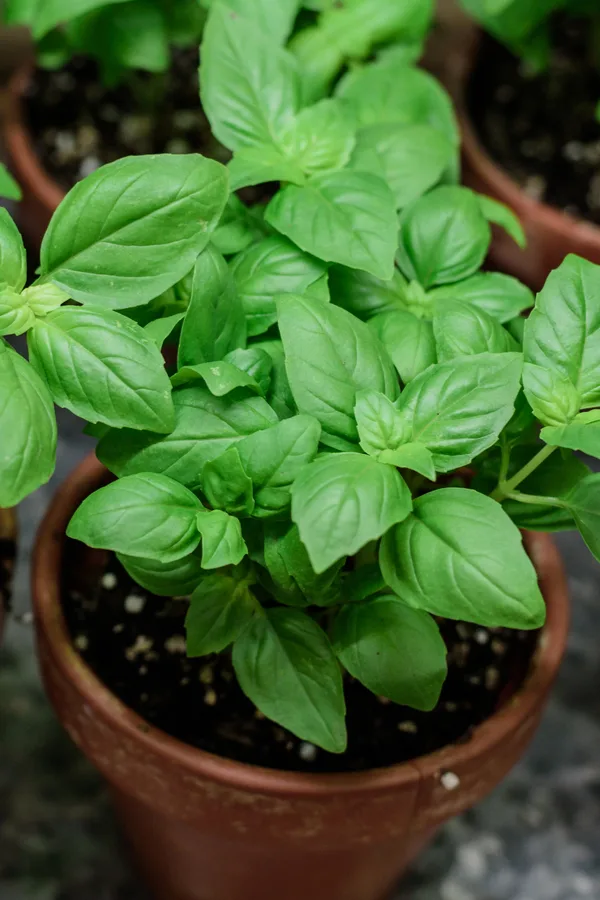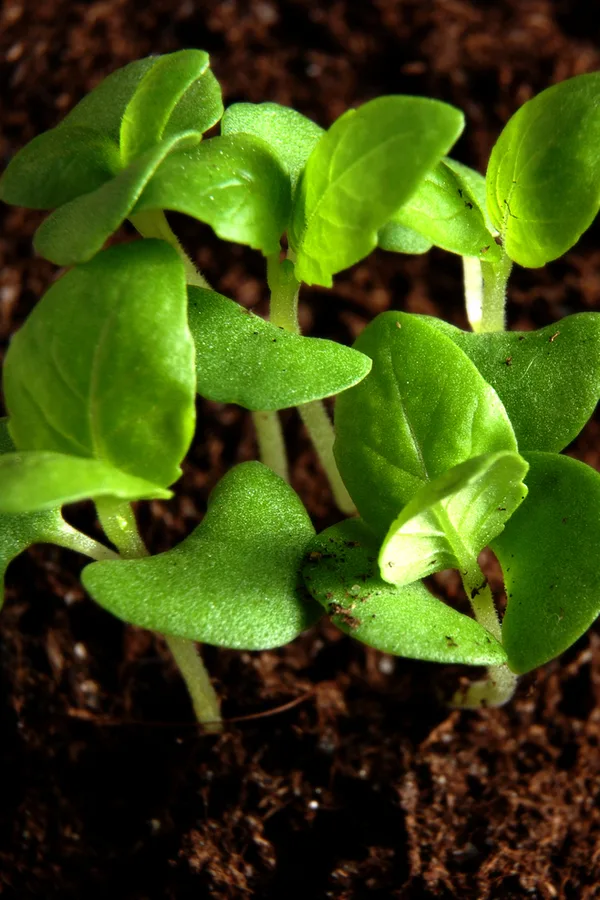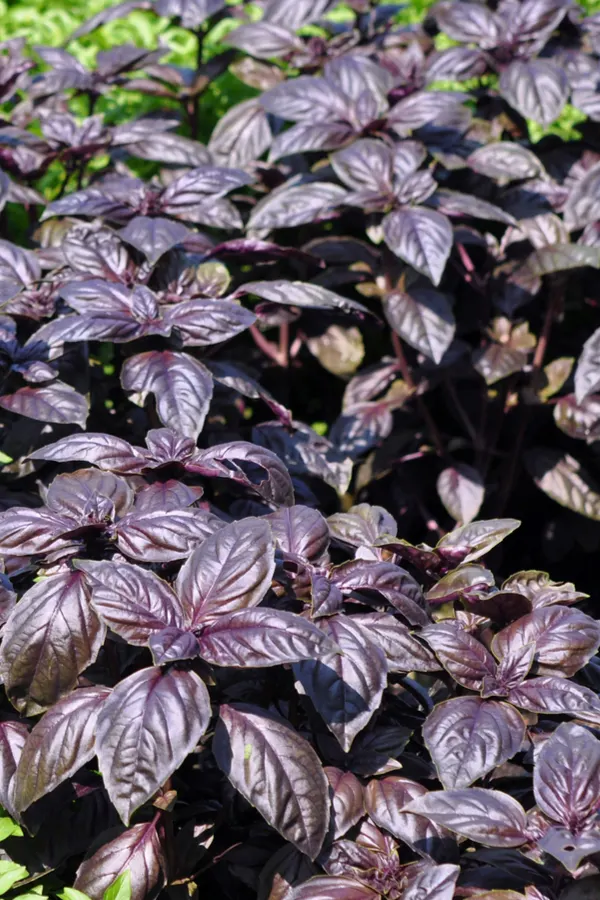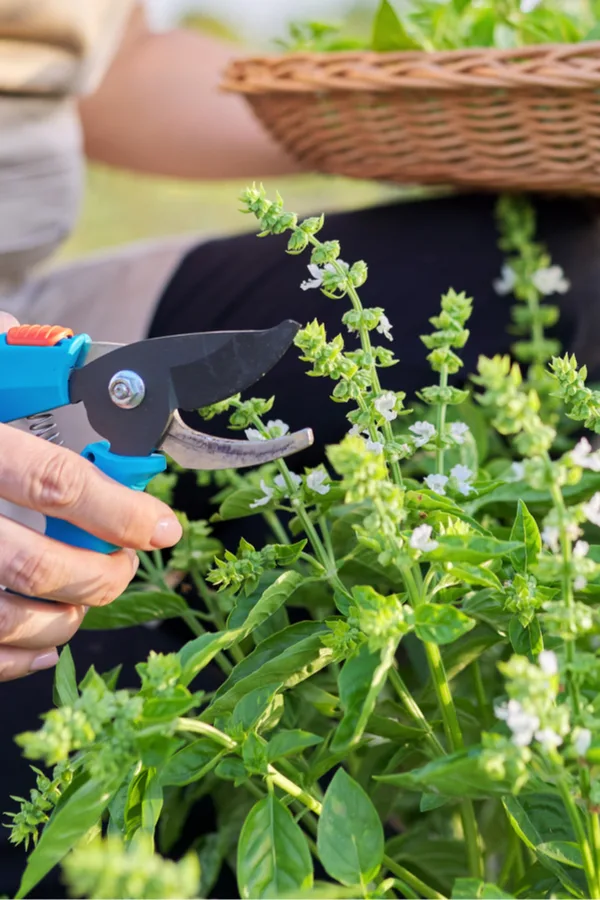There is nothing quite like growing basil to add beauty and fragrance to your garden or patio. Especially when you consider it brings incredible flavor to your kitchen too.
Basil is a tasty annual herb that grows well in nearly any garden setting. It flourishes in traditional gardens and raised beds, and grows equally well in pots and containers too.
In fact, many gardeners grow basil in containers on patios to help control flies and mosquitoes. The fragrant leaves are well-known to help repel the summertime pesky pests that can all but ruin a perfect evening outdoors. (See : How To Repel Mosquitoes Naturally With Plants)

Here is a look at how to successfully plant and maintain basil, no matter how or where you choose to plant it!
How To Grow Basil With Ease
There are 3 basic requirements to establish healthy, vibrant basil plants: fertile soil, proper watering, and giving plants a warm, sunny location to grow.
Soil Preparation – How To Grow Basil
Whether planting in pots or directly in the ground, basil prefers soil that drains well, and is loose and fertile. Basil will not grow well in hard, dry, or clay-like soil. Likewise, if the soil stays overly wet and saturated, the roots can easily rot away.
When planting in pots and containers, use a lightweight, high quality organic potting soil that drains easily. In addition, select pots at least 8″ in depth to allow plenty of room for deep root growth. Strong roots beneath the soil are critical for developing thick foliage above ground.
When planting basil directly in the ground, work in generous amounts of compost to the soil prior to planting. This not only improves the vitality of the soil, but also helps plants easily absorb water, all while aiding in draining excess moisture from the soil.
Basil prefers warm soil and warm air temperatures to grow best. Because of this, it is important to wait until the soil heats up a bit before sowing seed or digging in transplants.

Plant seeds 1/4″ to 1/2″ deep in the soil and keep the soil lightly moist to speed germination. When planting transplants, water plants in deeply, and mulch the soil around the plants to help conserve moisture.
Varieties To Plant
There are many varieties of basil to choose from, all with their own unique look and flavor. The most commonly grown variety of all is sweet basil. The tender, deep green leaves of this Italian-style basil are prized by chefs and in-home cooks the world around.
Other popular varieties are Thai basil, lemon basil, purple basil and Greek basil. Basil Seed Link ; Eden Brothers Basil Seed Collection
Location & Watering – How To Grow Basil
Locate plants so they will receive a minimum of 6 to 8 hours of sunlight each day. The more sun basil plants receive, the stronger they perform. Morning and afternoon sun are the best choice as they help warm the plants and soil quickly from cooler nights.

Proper watering is also a big key to basil’s success. Water young seedlings and transplants often the first few weeks to promote strong root growth. Established plants still need adequate moisture, and should be watered at least weekly if little to no rain falls.
Mulching Plants
When planting in a garden or raised bed setting, a thick layer of mulch will help conserve moisture in the soil for plants. It also helps to regulate soil temperatures, and in addition, can help keep competing weeds at bay. Straw, shredded leaves and grass clippings are all excellent mulching choices for basil planted in raised beds or gardens.
And don’t forget about mulching potted plants as well. A 1/2″ to 1″ thick layer of compost on the surface will help regulate soil temperatures, moisture levels – and provide a source of slow-release nutrients.
Harvesting Basil – How To Grow Basil
How you harvest your basil plants will play a key role in just how productive it stays. By harvesting early and often, the plant will continue to produce new sets of leaves.

As the plant reaches 8 to 10 inches in height, cut it back a few inches to encourage more branching. Continue harvesting and cutting back the plant to force new foliage. This will develop a bushier plant with more leaves for future harvesting.
If your basil begins to flower, cut it back to encourage new growth. If left on the plant, the flowers will begin to set seed, which signals the plant to stop leaf production.
Preserving Basil
So what is the best way to preserve all of that fresh basil? Basil, of course, can be dried quite easily and stored for all kinds of culinary uses. But the best way to preserve the fresh flavor it by freezing. Harvest, wash and freeze leaves as soon as possible to lock in the freshness of just-picked basil.
Here is to growing basil this year in your garden, raised beds or patio!

This Is My Garden is a website dedicated to spreading the love and knowledge of gardening around the world. We publish two new garden articles each week. This article may contain affiliate links.
